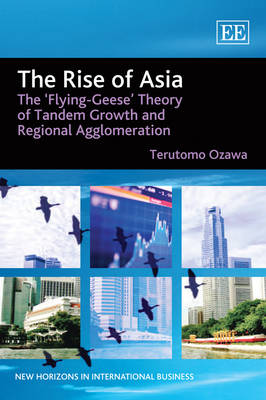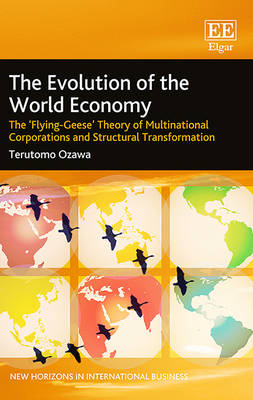New Horizons in International Business
3 total works
Institutions, Industrial Upgrading, and Economic Performance in Japan
by T Ozawa and Terutomo Ozawa
The book brings together and expands upon theories developed in the author's work over many years, using them as building blocks for his flying geese model. Concepts explored include:
* economics of hierarchical concatenation, increasing factor incongruity, comparative advantage (or market) recycling
* the Ricardo-Hicksian trap of industrial production, Smithian growth elan, triumvirate pro-trade structural transformation
* knowledge creation versus knowledge diversion, the price-knowledge/industry-flow mechanism 'a la David Hume'
* the syndrome of institutional incongruity, and socially justifiable moral hazard versus degenerative moral hazard.
The dynamic process of industrial upgrading is analysed in detail, and important lessons for both developing and transition economies are highlighted.
This fascinating book will attract a wide-ranging readership, encompassing practitioners and academics interested in international business, economic development, trade, and political science. In addition, sociologists focussing on business and industry, and researchers on, and policymakers in, developing and transition economies will also find this book of immense interest.
The author explores an array of concepts - from the ladder of economic development and hegemon-led growth clustering, through 'stages jumbling', to comparative advantage recycling and the Ricardo-Hicksian limits of industrialism - which together help bring an understanding of the dynamics of tandem growth and regional agglomeration in Asia. The book also investigates the causal mechanisms of structural upgrading and emphasizes the critical role of multinational corporations. Throughout this wide-reaching analysis, Terutomo Ozawa advocates a 'flying-geese' way of thinking—that is, to think of Asia's phenomenal growth in hierarchical, dialectical, and evolutionary terms.
In a new era of rapid globalization and rising economic nationalism, this timely and insightful book will appeal strongly to scholars and students of international business, economics, political science, and international relations. Those specializing on Asia will find it of particular value.
Terutomo Ozawa's reformulated 'flying-geese' theory explains structural changes as an innovation-driven, ratcheting-up process of economic growth and shows that market-driven multinational corporations are key players for a successful 'flying-geese' formation and structural transformation. The book argues that the 'ladder' of economic development must be conceived as a double-helix with inter- and intra-industry rungs, the latter embedding cross-border supply chains and adaptive innovations. A thorough exploration of the structural changes under Pax Britannica and Pax Americana - moving from 'kicking away the ladder' from emerging economies to then providing it - demonstrates that this trend engenders multinational corporations that can facilitate structural transformation, particularly in catching-up economies. Ozawa shows that China is now in the critical transitional period that requires more sophisticated institutional, socio-political setups, as well as more advanced knowledge and ethics to move from the lower to the higher rungs.
This enlightening, accessible and timely conclusion to Ozawa's trilogy will be of great interest to many, particularly those specialising in international business, economics, political science, and international relations. Academics and practitioners alike will find this an invaluable resource.


